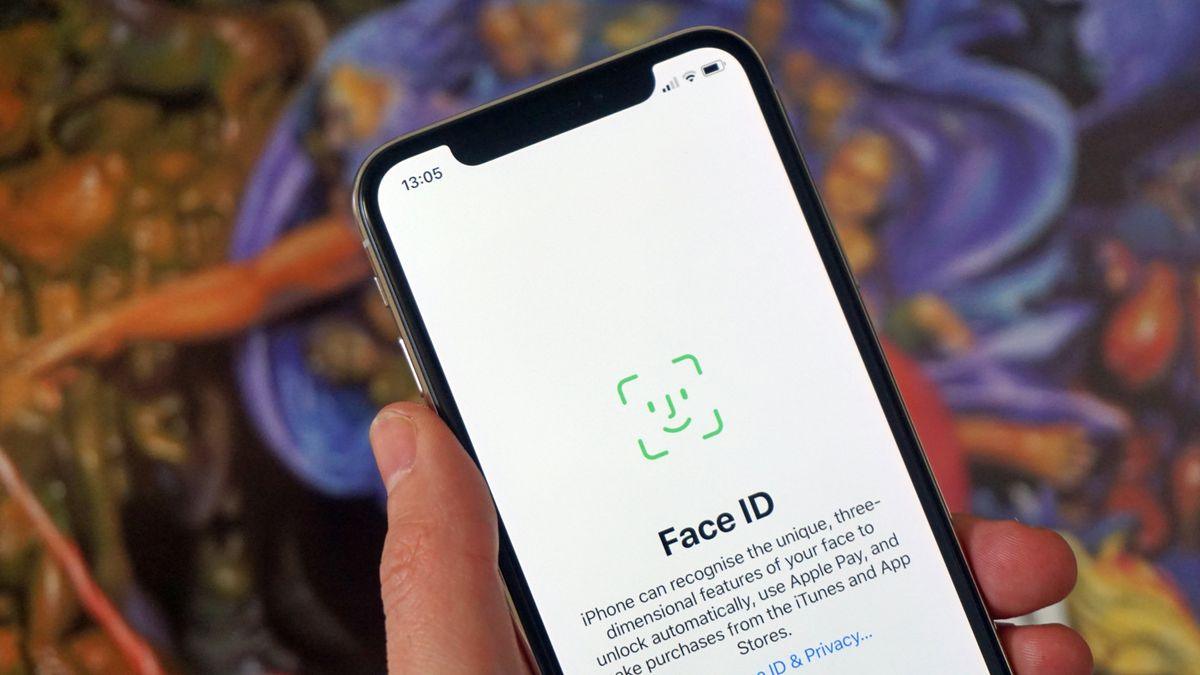- Apple obtained a patent for a new technology that could enable on-screen facial identification
- The process described removes tiny parts of the screen to allow infrared to pass through.
- This follows years-old rumors about the feature launching with the iPhone 17.
Apple has obtained a patent for a new technology that could finally allow the integration, as has long been rumored, of an under-screen Face ID system in the iPhone, perhaps as early as the iPhone 17 series.
The patent details a possible new solution to the problem of transmitting infrared light – which Face ID uses to scan and verify your face – through the pixels under the glass of a phone’s screen.
Essentially, Apple’s latest idea involves removing only part of each affected individual pixel, called a subpixel. Subpixels display red, green, or blue light, which combine to form one of millions of colors within viewing distance.
The patent argues that in theory there should be no difference in the final image after the selected subpixels are removed, because the removed subpixels will be aligned with neighboring subpixels of the same color.
The document also notes that parts of the touch mesh could be removed to allow better infrared passage, and that they would be too small to affect touch responsiveness.
While it’s best not to draw any conclusions until this technology is implemented, it appears that Apple is looking to develop a more granular version of the technology that Samsung uses in the under-display selfie camera of the Galaxy Z Fold 6 – by removing only the necessary screen components to let light through.
This doesn’t mean that an under-display camera will be coming to the iPhone anytime soon, however. Rumors of an iPhone with Face ID built-in have been circulating since at least 2021, and we’ve already heard that an under-screen selfie snapper won’t arrive until the iPhone 19.
More promisingly, we reported on rumors that the technology could launch with the iPhone 17 in March 2023.
In any case, we’d generally expect a feature like this to be available on the iPhone 17 Pro and iPhone 17 Pro Max before making it to base iPhones in subsequent generations. But the implementation of the new camera control button on every new iPhone in 2024 shows that Apple isn’t entirely opposed to feature parity across its smartphone lineup.
Maintain momentum
As our iPhone 16 review details, Apple’s latest base model marked the biggest cross-generational leap forward in recent iPhone history and is the most professional vanilla flagship ever produced by Apple.
Meanwhile, the top tier of Apple’s smartphone lineup – the iPhone 16 Pro and iPhone 16 Pro Max – saw substantial and notable improvements in performance and design in 2024, as the company unified the lineup around Apple Intelligence (which, one way or another, continues to roll out).
Apple is often lambasted for its small annual overhauls, but I’d be hard-pressed to call the company unoriginal after two straight years of huge upgrades.
All of this is to say that Apple has a choice when it comes to the iPhone 17: maintain its momentum, or leave things as is for a few more generations. I hope this patent suggests that Apple wants to continue improving its mobile experience at a steady pace, leaving smaller incremental steps like the one between the iPhone 13 and iPhone 14 in the past.
I’d certainly be impressed to see such complex and original technology integrated into the screen, provided it’s done well – Apple is often lambasted for its small annual overhauls, but I’d be hard-pressed to call the company no original after two consecutive years. years of huge improvements.
Face ID is the main reason iPhones feature the pill-shaped Dynamic Island, which, while relatively svelte and quite useful, is now one of the largest cutouts seen on a flagship phone – most manufacturers opt for it. for a simple punch-hole selfie camera.
Of course, Apple’s competitors don’t use infrared facial recognition, so there’s less real estate at the top of the screen, but there’s still a striking visual difference between the black dot left by selfie cameras Samsung Galaxy S24 and Google. Pixel 9 and the blackened bar that is the Dynamic Island.
For those who appreciate technical specifications, seeing the Face ID system disappear under the iPhone’s screen would be an impressive technical feat, similar in scale to the first under-display fingerprint scanners.
Whether or not under-screen Face ID will reach consumers with the later-generation iPhone 17 series, or at all, depends on whether Apple intends to implement its new patent. If you don’t feel like waiting, be sure to check out our list of the best iPhones for an overview of Apple’s latest and greatest handsets.




